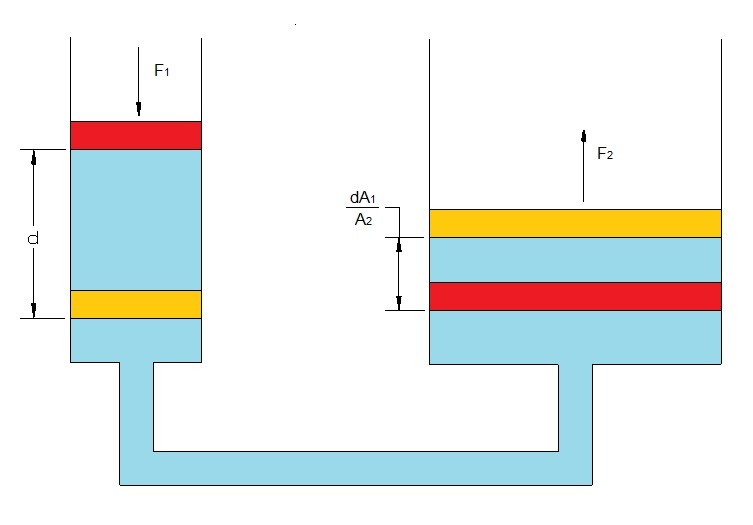In a hydraulic system the pressure throughout the system can be considered constant. Due to this fact you can use a hydraulic pressure to your advantage. To use hydraulic pressure to your advantage you will need to change the cross-sectional area at different parts of the system. This works because the force will change as the cross-sectional area changes.
(Eq 1) $P=\frac{F}{A}$
$P$ = Pressure
$F$ = Force
$A$ = Cross-Sectional Area
As a result if you were to apply a certain force on a fluid in small cylinder, that force will magnified in a cylinder with a larger cross-sectional area. In turn this will allow you lift a much larger object than you typically wouldn’t be able to without the mechanical advantage of hydraulic pressure. An example of where this is applied is a floor jack. A floor jack allows you to lift large heavy objects such as car using a comfortable force.
(Eq 2) $F_1=\frac{F_2A_1}{A_2}$

Now one thing that you have to consider is that even though you will gain a mechanical advantage the throw of the larger cylinder will be shorter than the smaller cylinder. Because of this you generally need to have reservoir of hydraulic fluid to supply the smaller cylinder so that you will be able to raise the larger cylinder up to a desired height.